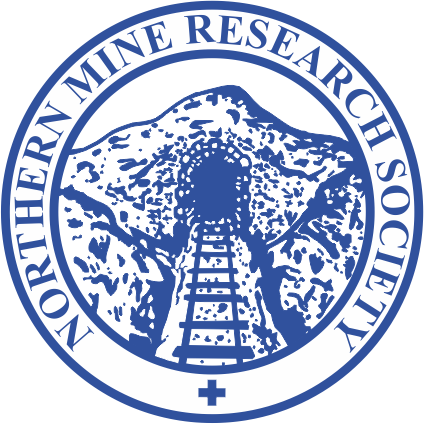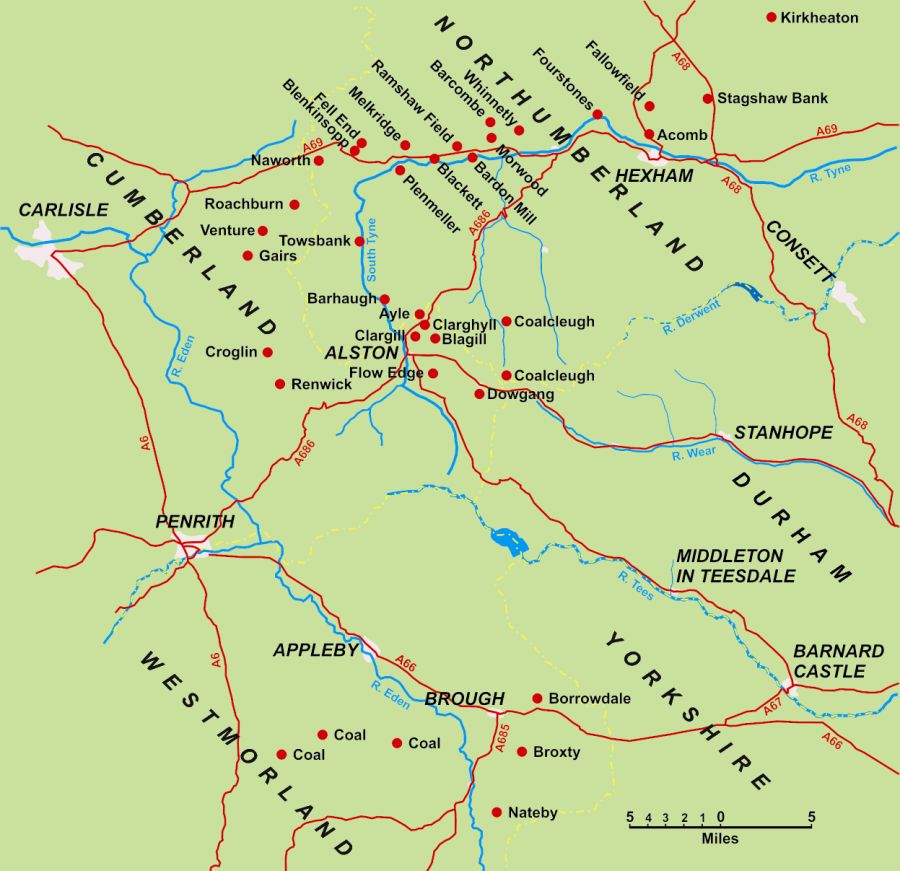This area, centred on the Alston Block, was dominated by workings in the Little Limestone coal which is found in the Upper Coal Sill, immediately below the Little Limestone. A second seam is found in the Lower Coal Sill, a short distance below. In most places the seam is a low grade bituminous coal, but in the Ayleburn area, two miles north of Alston, it becomes a semi-anthracite because of the combined effects of heat and pressure when magma was intruded into nearby strata to form the Whin Sill. In the Nent and South Tyne valleys particularly the outcrops of the Little Limestone Coals are clearly marked by lines of spoil heaps from abandoned workings. At Ayleburn the seam is 18 inches thick, but it gets thicker to the north, and at Blenkinsopp colliery, near Greenhead, it is around 60 inches thick. In places, however, it splits into two or even three leaves. This coal was worked extensively in the South and North Tyne valleys until 2002.
The Coalcleugh coal is higher in the series, above the Fell Top Limestone, has also been an important seam in the north-east past of the area. As the name suggests, it is found nearer the summit of fells.
An important source of iron ore was the area around Bellingham and Ridsdale where, in the 19th century, clay ironstone nodules were quarried from the shales above the Three Yard Limestone.
Further reading:
Brooks, G. The East Cumberland Coalfield, British Mining No.88, pp.126-136
Smith, R. & Murphy, S. Mines of the West Pennines, British Mining No.91, 2011
Robertson, A.F. The story of the Roachburn Pit Disaster – January 28th 1908, Alston: Hundy Publications, 1997


